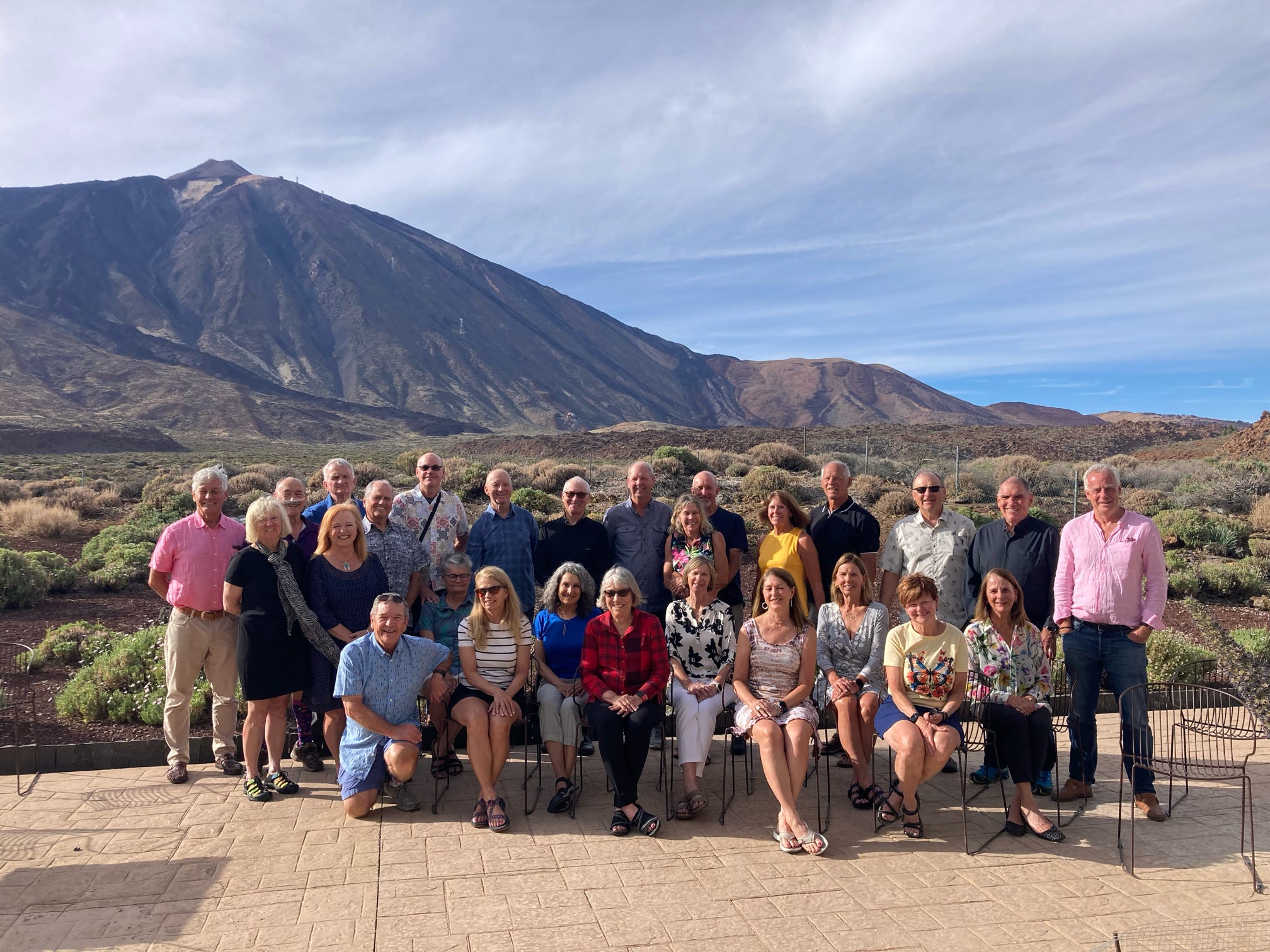The Bicycle Adventure Club - Come Ride With Us!
Ride Rating System
The BAC has a Ride Rating system that can tell you what to expect while on one of our rides. Learn more...Canary Islands - 2025
May 31st to June 14th
Ride Coordinator: Nelson Diaz
Report by: Cassie Klumpp
The Canary Islands are located at 20 degrees latitude in the Atlantic Ocean off the coast of Africa. Politically, the islands are an autonomous community within Spain but they are located a long way south of the Spanish mainland, roughly 1,000 miles south of Madrid. The archipelago consists of seven large and several smaller islands, all of which are volcanic in origin. The islands were settled by Spain in the 1400s and were utilized to provision their ships on the journey to the New World. The Spainards utilized the Trade Winds which flow north to south over the islands and then head west to the Caribbean when they near the Equator.
The Teide volcano on the island of Tenerife is the highest mountain in Spain, and the third largest island volcano on Earth. Volcanoes are still active on some of the islands with the most recent eruption occurring on the island of La Palma in 2021.
Our bike tour transversed the four largest islands (i.e. Lanzerote, Fuerteventura, Gran Canaria and Tenerife) and required three ferry transports between the islands. To take advantage of the direction of the trade winds, the tour predominately traveled from north to south.
Our tour commenced from the beach resort of Costa Tequise on the island of Lazarote. Riders were able to visit the market in the city of Tequise, the lava tube known as Jameos de Aqua and the Mirador del Rio and the climb to Peña de Juan Estevez.
Departing from Costa Tequise, riders traveled to Playa Blanca on the southern end of the island and had the opportunity to visit the Timanfaya National Park and its volcano, Montaña del Fuego. A bus tour In Timanfaya National Park provided a tour through of the solidified lava fields, craters, and volcanic cones of Montaña del Fuego.
From Playa Blanca, a short ferry ride took the riders to the northern end of the island of Fuerteventura. The riders then rode to the to the town of Costa Calma on the southern end of Fuerteventura. On the next morning after a short 40 km ride to the port of Morro Jable , a longer ferry transport took us to the large city of Las Palmas on the island of Gran Canaria. We stayed in the colonial center of Las Palmas for two nights.
Our next destination was Tejeda, a charming town located in the interior of the island of Gran Canaria at about 3.300 feet altitude. We spent three nights here and several rides were available out of Tejeda with beautiful views of the volcano, Pico de las Nieves.
The last island transfer involved a beautiful descent from Tejeda to the port of Agaete, Grand Canaria. This ride included a beautiful descent through pine forests, reservoirs and banana plantations. We then transferred to Santa Cruz de Tenerife. After a day off in Santa Cruz, riders could either take a bus to the highest point on the trip, or ride from La Laguna to the base of El Teide. We stayed two nights at the Parador de Cañadas de Teide, a hotel which is utilized by professional cycling teams in the winter for high altitude training. A day at las Cañadas de Teide included a tram ride near the top of El Teide and a half mile hike to the top of the volcano. The summit of El Teide provided incredible 360 degree views of the Canary Islands. The final ride involved an incredible descent from El Teide to El Médano on the southern end of Tenerife for our final night of this amazing tour.
The weather we experienced was subject to the trade winds, which blow constantly from the north east. We mostly had tailwinds due to traveling predominately north to south but had some harrowing cross wind experiences when traveling in an easterly or westerly direction. Temperatures were very constant throughout the trip with daytime highs of 75 degrees and nighttime lows of 65 degrees. The climate was mostly arid, although some areas (the northern slopes of the mountainous islands) are verdant with lush vegetation and forests.
Bicycle Adventure Club
PO BOX 23998 San Diego, CA 92193
Telephone (858) 715-9510 office@bicycleadventureclub.org
